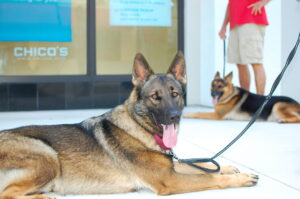Canine intelligence is often assessed using various methods that take into account different aspects of a dog’s cognitive abilities. One widely recognized approach is based on the work of Stanley Coren, a psychology professor and recognized expert on dog intelligence. In his book “The Intelligence of Dogs,” Coren proposed three types of intelligence for dogs:
Instinctive Intelligence: This refers to a dog’s ability to perform tasks that it was bred for. For example, herding breeds might excel in tasks related to herding, while retrievers may be proficient at retrieving.
Adaptive Intelligence: This type of intelligence is related to a dog’s ability to learn from its environment and solve problems. Dogs with high adaptive intelligence can quickly learn from experiences and apply that knowledge to new situations.
Working and Obedience Intelligence: This measures a dog’s ability to understand and carry out commands. Working and obedience intelligence is often what people think of when they talk about a dog being “smart.” This includes how quickly a dog can learn commands and how well it obeys them.
Stanley Coren compiled a list of dog breeds and their relative intelligence rankings based on working and obedience intelligence. Breeds like Border Collies, Poodles, and German Shepherds tend to score high on these lists.
It’s important to note that intelligence in dogs is multifaceted, and different breeds may excel in different areas. Additionally, individual variation within a breed can be significant.
Apart from these formal assessments, dog owners and trainers often gauge intelligence based on observations of a dog’s problem-solving abilities, trainability, and social skills. However, it’s crucial to remember that each dog is unique, and intelligence does not necessarily correlate with being a good companion or a well-behaved pet.

